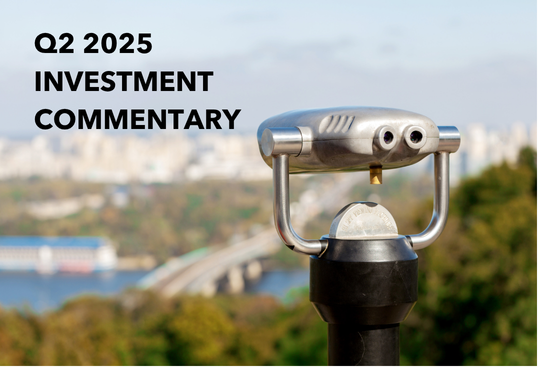Rising post-pandemic consumer demand, coupled with supply chain bottlenecks and labour shortages, led to a significant rise in the price of almost everything. Inflation has reared its ugly head, rising to 4.8% in 2021 (its fastest pace since 1991), and so far in 2022, annualized inflation has risen to 6.7% in March. Attempting to rein it in, the Bank of Canada raised interest rates by 0.25% in March, and 0.50% in April 2022. Some anticipate another half-percent increase in June, and possibly more in the latter half of the year.
By December 2021 yearend, the average Toronto house price had climbed to $1,095,381[i]. And in just the first quarter of 2022, prices were up yet again, the average Toronto region house sale rising 19% to a whopping $1,299,894.
In recent days, since interest rates began to rise, there has been some softening in Toronto’s real estate market, with housing prices dipping just a bit. But with rising interest rates, the cost of carrying a mortgage has gone up – so housing affordability overall has not improved. In the first three months of 2022, the carrying cost for a mortgage (adjusted for inflation) reached its highest level in over 46 years.
Not surprisingly, the Canadian government’s recently tabled budget proposed several measures targeted specifically at Canada’s red-hot housing market. Most of the initiatives are focused on first-time home buyers, trying to give them the boost they need to get into the market. Other initiatives target the low number of homes available.
RECENT FEDERAL BUDGET MEASURES
To help reduce the new house supply crunch, the budget proposes to increase funding for house construction and provides tax breaks for those renovating to accommodate a senior parent or adult with a disability. Increased construction should help to increase supply, which could see house prices soften.
One factor that has helped to fuel the rise in housing prices has been housing investment for profit, largely from activities such as house-flipping or from foreign investment. The new federal budget proposes measures that prohibit foreign investment for two years and levy full taxation on the profits of house-flippers if they hold the property for less than 12 months.
The budget also doubles a couple of existing tax breaks related to housing:
- For first-time buyers who purchase a house, the First-Time Home Buyers’ Tax Credit would allow them to claim $10,000 rather than $5,000 – which gives home buyers a rebate of $1,500.
- The qualifying expense limit of the Home Accessibility Tax Credit is also set to double, to $20,000 for the 2022 and subsequent tax years. This translates to a tax credit for senior Canadians of up to $3,000 for any renovations or alterations that make their homes more accessible.
THE TAX-FREE FIRST HOME SAVINGS ACCOUNT (FHSA)
Perhaps one of the more interesting initiatives proposed is the Tax-Free First Home Savings Account (FHSA), a new tax-sheltered savings account designed to help home buyers save toward a down payment more quickly. Expected to be available in 2023, the FHSA would allow first-time home buyers to save up to $40,000 tax free. Your deposit would be tax deductible, like in a Registered Retirement Savings Plan (RRSP), and would be non-taxable like a Tax-Free Savings Account (TFSA) when you went to withdraw. Any investment growth on your contributions in the FHSA is also tax free.
FHSA Eligibility
- Open to Canadian residents who are at least 18 years old
- You cannot have lived in a home you owned at any time in the year the FHSA is opened or the preceding four calendar years.
Contributions
- Annual contribution limit of $8,000
- Unlike an RRSP or TFSA, unused FHSA contribution room cannot be carried forward. If you only contributed $5,000 to your FHSA, you are not able to add another $3,000 room to the next year’s contribution. It is an annual $8,000 limit each year.
- Lifetime contribution limit of $40,000
Withdrawals
- For a first home purchase, withdrawals are not subject to tax.
In addition to being a tax-sheltered account, the FHSA has another advantage over current programs. Unlike the Home Buyers Plan (which allows you to withdraw up to $35,000 from your RRSP to buy a home), you do not have to pay back withdrawals from an FHSA. For younger investors, or those looking to buy later in the future, an FHSA is a great opportunity to grow that $40,000 investment over the long term. But for those wanting to buy a home right now, the FHSA is not overly helpful.
The FHSA is quite flexible, however. For an older, more established investor who has already built up their retirement savings, they could transfer up to $8,000 annually (to a maximum of $40,000) from their RRSP to an FHSA tax free. However, these transfers would not restore RRSP contribution room.
You can also transfer funds from an FHSA to your RRSP or Registered Retirement Income Fund (RRIF), without any tax implications. Transfers would not reduce or be limited by your available RRSP contribution room either.
And if you do not end up buying a home, after 15 years of opening an FHSA, those unused savings can be transferred into an existing RRSP or Registered Retirement Income Fund (RRIF)[ii]. If you simply close the FHSA and withdraw the funds, then the proceeds would be taxable.
WILL THE FEDERAL BUDGET MEASURES MAKE A DIFFERENCE?
While it is great to see the federal budget put a focus on housing, these measures are not likely sufficient to significantly cool Canada’s hot housing market. However, the real question is whether these policies, together with tightening monetary policy (rising interest rates), can help make housing more affordable for Canadians.
Book a complimentary call with us today if you would like financial guidance in today’s market and the recent Federal budget announcements.
Sincerely,
Your Tall Oak Private Wealth Team
[i] https://trreb.ca/files/market-stats/market-watch/historic.pdf
[ii] https://budget.gc.ca/2022/report-rapport/tm-mf-en.html#a2
This material is provided for general information and is subject to change without notice. Although every effort has been made to compile this material from reliable sources; no warranty can be made as to its accuracy or completeness, and we assume no responsibility for any reliance upon it. Before acting on any of the above, please contact Tall Oak Private Wealth of Raymond James Ltd., for individual financial advice based on your personal circumstances. Raymond James Ltd. – Member – Canadian Investor Protection Fund. Insurance offered through Raymond James Financial Planning Ltd., not a member – Canadian Investor Protection Fund.
This provides links to other Internet sites for the convenience of users. Raymond James Ltd. is not responsible for the availability or content of these external sites, nor does Raymond James Ltd endorse, warrant or guarantee the products, services or information described or offered at these other Internet sites. Users cannot assume that the external sites will abide by the same Privacy Policy which Raymond James Ltd adheres to.
The views expressed in this commentary are those of Tall Oak Capital Advisors as at the date of publication and are subject to change without notice. This commentary is presented only as a general source of information and is not intended as a solicitation to buy or sell specific investments, nor is it intended to provide tax or legal advice. Statistics, factual data and other information are from sources Tall Oak believes to be reliable but their accuracy cannot be guaranteed. This commentary is intended for distribution only in those jurisdictions where Tall Oak Capital Advisors are registered. Securities-related products and services are offered through Raymond James Correspondent Services Ltd., member Canadian Investor Protection Fund. Insurance products and services are offered through Gryphin Advantage Inc., which is not a member-Canadian Investor Protection Fund. This commentary may provide links to other Internet sites for the convenience of users. Tall Oak Capital Advisors is not responsible for the availability or content of these external sites, nor does Tall Oak Capital Advisors endorse, warrant or guarantee the products, services or information described or offered at these other Internet sites. Users cannot assume that the external sites will abide by the same Privacy Policy which Tall Oak Capital Advisors adheres to.




